
ClubFantasci
gamer level 4
1528 xp
1528 xp
followers
11
11
Use my invite URL to register (this will give me kudos)
https://boardgaming.com/register/?invited_by=clubfantasci
profile badges




recent achievements

Baron / Baroness
Gain 10 total followers
Gain 10 total followers

Gamer - Level 4
Earn Gamer XP to level up!
Earn Gamer XP to level up!

Novice Reviewer
Review 5 games and receive a total of 140 positive review ratings.
Review 5 games and receive a total of 140 positive review ratings.

I'm a Real Player!
Claim that you have played a game today by clicking the "Played Today!" button on a game page 25 times.
Claim that you have played a game today by clicking the "Played Today!" button on a game page 25 times.
Player Stats
Critic (lvl 2)
595 xp
595 xp
Explorer (lvl 1)
128 xp
128 xp
Professor (lvl 0)
83 xp
83 xp
Reporter (lvl 1)
140 xp
140 xp
About Me
Chief editor and board game columnist/reviewer for Club Fantasci www.clubfantasci.wordpress.com
President of the The Lowry Agency www.thelowryagency.com
Host of Club Fantasci - A speculative fiction online book club and board game news and reviews.
Host of Live From Music City - A podcast on the music business
Board Game, Card Game and RPG Review Policy:
To have your game reviewed by David Lowry on Club Fantasci please contact us at boardgames at lowryagency dot com.
We would love to review your game for you but we cannot promise to review every game we get. We will however do our best to review it for you. This review may be in written or video form.
Once the review is completed it will be posted to all Geek Eccentric social media accounts as well as all The Lowry Agency social media accounts. For a list please contact us.
Please contact for the shipping address.


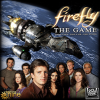

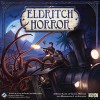














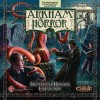

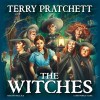


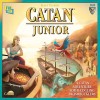



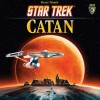

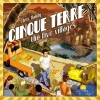
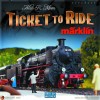
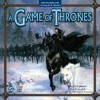


![Go to the Level 7 [escape] page Go to the Level 7 [escape] page](https://boardgaming.com/wp-content/uploads/2012/08/Level-7-escape-100x100.jpg)



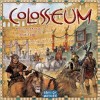
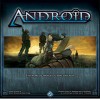




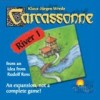
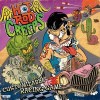
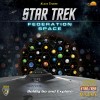




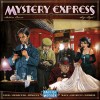



























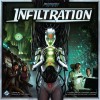





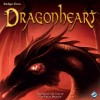
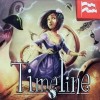






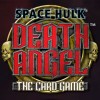












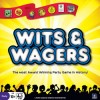


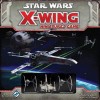




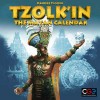






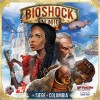
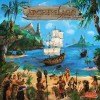
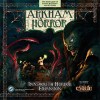

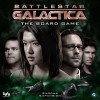
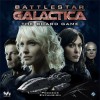
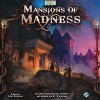




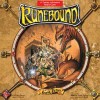
















Kemet
Pyramids tower in the sky… Armies gather for battle… Priests chant to their gods… Massive creatures amass for combat… And the gods send their troops against one another to capture temples, cities and demonstrate their superior power. Ancient Egypt is on display here as armies trek across the desert in search of victory and glory for their gods.
Publisher: Asmodee Games
Game Designer: Jacques Bariot, Guillaume Montiage
Artwork: Dimiti Bielak, Emile Denis, Nicolas Fructus
Players: 2 – 5
Ages: 13 to adult
Playing Time: 90 minutes
Game Mechanics: Area Control, Area Influence, Area Movement, Campaign, Battle Card Driven, Card Drafting
Contents: 1 Board, 48 Power Tiles, 7 Creatures, 25 Divine Intervention Cards, 32 Battle Cards, 53 Victory Point Tokens, 3 Silver Action Tokens, 1 Golden Action Token, 1 Card Index for Divine Intervention Cards and Power Tiles, 60 Army Units, 25 Action Tokens, 5 Prayer Point Markers, 5 Player Boards, 5 Player Order Markers, 18 Pyramid Die
Suggested Retail Price: $69.99
Parental Advisory: Safe for kids
Kemet from Asmodee Games is a strong game that plays in a short amount of time that provides plenty of theme, punch and strategy. Designed by Jacques Bariot and Guillaume Montiage, players vie for victory points while trying to battle each other, acquire special powers to make their armies stronger and controlling temples for their gods. Players will battle back and for temples that give victory points, also achieving victory points if they attack and are successful in combat and race to build their pyramids fast enough to acquire power tiles that also give victory points and special creatures to use in combat. The first player to eight victory points wins! The long version is 10 victory points.
I am not going to do my usual breakdown of rules in this review. Why? Because most of the gamers have seen game before or a million reviews and for those that are just now discovering games again, my thoughts are probably more relevant. Let’s just say that for such a deep game, the rules are very simple, the rule book is very short and it won’t take long at all to learn how to play this game. Kemet is a surprisingly deep game of combat, strategy and thematically very strong. Everything about this game drips its theme, which in my opinion makes it stand out even more. I love a strong theme backed up by sound mechanics and this games has both. I love the fact that everyone starts out exactly the same size and strength and is able to “customize” their army with power tiles that give them completely different sets of strengths and weaknesses. There are never more than two of the same type of power tiles in the game and players can never have more than one of the same tile. This provides for a ton of game re-playability.
Players build up their Pyramids which allow them to buy more powerful power tiles. The Pyramids are ranked level 1 – 4 and if you control any level 4 Pyramid. that gives you a victory point for as long as you hold it. Holding Temples also gives you a victory point at the end of the day phase if you still hold it at that time.
Players may also teleport a section of their army (never more than 5 units) to other parts of the board their Pyramid and landing at any Obelisk on the board for a cost of two Prayer Points (money.) This is an incredible mechanic which moves the game along quicker and allows for players to be in the action more. This is limiting though. The players may only travel from Pyramid to Obelisk. They can’t travel from Obelisk to Obelisk. The players will have to strategize some of their land movement to attack or take over territory.
City walls help protect a players Pyramids to an extent. A player may not attack a city wall unless they are adjacent to it even their movement ability is raised to two spaces. The player must be adjacent to attack another players city. Players must enter into combat if in the same region so this lends to very short alliances and no ability to gang up on another player.
The combat system in Kemet is incredibly simple and most definitely has its risks and rewards. Players choose from six different Battle Cards. Each Battle Card depicts what strength, defense and army loss (if any) they offer. Each battle has the opponents chose two cards, keep one and discard one and play any relevant Divine Intervention cards which may help them achieve victory. The players then total the army strength in the zone, plus any Creature benefits (if one is present,) plus the Battle Cards bonuses and any Divine Intervention Cards effects. The player who has the highest strength wins the battle but not necessarily without loss. Kemet The components for this game are top-notch. The creature figurines are gorgeously sculpted, the board and all the artwork are beautiful and the Pyramids are everyone’s favorite. They are large 4-sided marbled die in red, white and blue colors. The Power Tiles are very thick and of course covered in beautiful artwork. The Battle Cards and Divine Intervention Cards are of typical stock but you shouldn’t need to worry about sleeving them. The army figurines are also very well done especially for their size and all of this can be painted for those that love to do that to add even more of thematic edge to the game.
The one big issue I have with this game is the one player aid they give you in english. That being said there are 5 total in different languages, but being this game is only supposed to be 60 minutes long, having only one player aid to review all the Power Tiles and Divine Intervention cards severely slows the game down. I recommend you make a few copies of this player aid so each player can have one so they can plan before their turn comes back around other wise I promise without fail, people will be passing this back and forth and somehow the person who needs it most gets it last.
Players need to make sure they understand the victory points system and how the temporary versus permanent victory points work. They also need to understand the various ways to achieve them in order to have a chance of winning, especially against warmongering players that love the power of battle and bloodshed.
Kemet is one of the most fun board games I have played this year. It provides an immense amount of strategy, the perfect amount of game stress and immerses the player in the theme quite effectively. The who set of mechanics are incredibly simple to learn and with in no time, players are involved in a deep gaming experience that is very satisfying but not so heavy to ever really be bogged down. I know a lot of people compare it to Cyclades but I have yet to play that game but if you like area control games like El Grande then you will love this game. One caveat is probably not for players who don’t like combat games. Even though this is a simple system and the combat is very minimal in any kind of violence, it isn’t for those who don’t like conflict. For those of us who think of games like Risk, this game makes that game look antiquated and archaic.
Club Fantasci Scoring (Based on scale of 10):
Artwork: 10
Rules Book: 8
Re-playability: 9
Component Quality: 9
Club Fantasci Overall Score: 9
I am giving Kemet 9 out 10 stars because it truly brings so many things into one game effectively. Strategy, thematics, depth and fun all combined into a short 60 – 90 minute game that feels like you really accomplished something when you win. Excellent game and a must have for any gamers collection.
This game is Club Fantasci
Company Website: http://us.asmodee.com/
Company Facebook: https://www.facebook.com/pages/Asmodee-game-News/269642758448
Company Twitter: https://twitter.com/Asmodee_USA
Company Google+: https://plus.google.com/u/0/114742625337406481414/posts
Note: A review copy of this game was provided to me.
If you like what we bring you, please vote for us here: http://www.boardgamelinks.com/links/details/1420
Club Fantasci on Facebook: www.facebook.clubfantasci
Club Fantasci on Twitter: www.twitter.com/clubfantasci